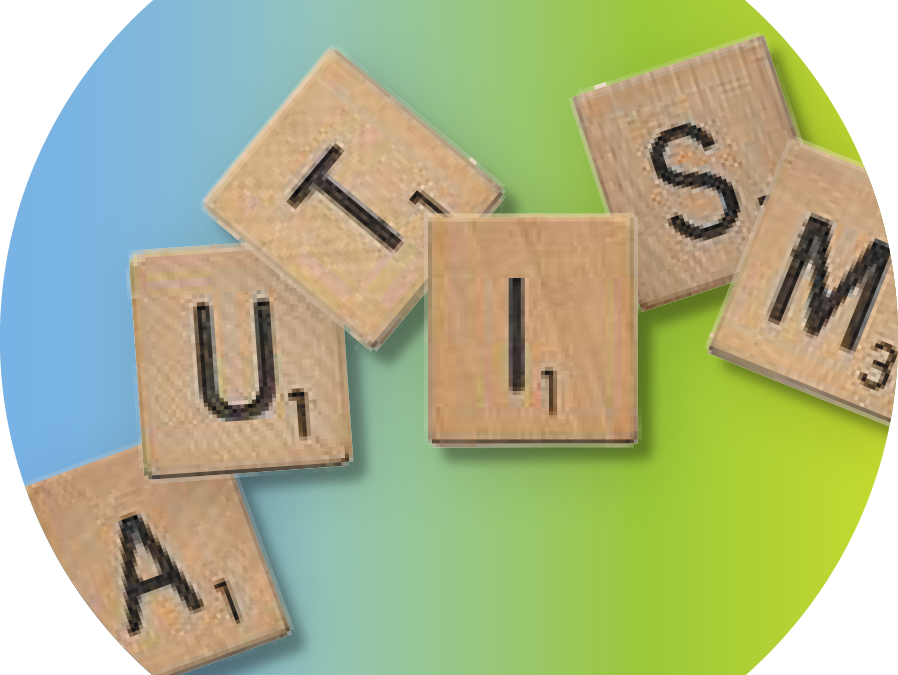
by IABA Team | Dec 6, 2022
Some teens with autism will opt to continue their education at college. Going to college is a huge decision (both financially and socially) for any kid, and doubly so for kids with autism.
What do kids with autism need to do to ensure a successful college education? Is it different from that of a neurotypical kid? Let’s take a look.
Social Planning
People with autism can have social difficulties, especially when it comes to making time for social events and picking up on cues given in social situations. Planning ahead for these situations can make them a bit easier.
Scheduling events well ahead of time is a great way for teens with autism to remember that a special event is happening on a given day. Having a peer buddy can also help with social situations–someone to help ease the burden of deciphering neurotypical social actions, expressions, and cues.
Organization
Keeping your schedule, materials, and living space organized are keys to success in general. Making sure a college student with autism is organized can help them thrive in a purely academic situation.
Make sure to have detailed calendars ready before each month starts. Have specific places for all books, materials, and other needs. Schedule a specific time to clean and reorganize anything that needs it. Taking steps like these can help college students with autism stay organized and ready for class.
Planning for the Transition to College
College is a huge change to the lifestyle of every kid who decides to go. Making sure your child knows what the transition entails is crucial to their college experience.
Even teens who attend local or community colleges and live at home will need to know what to expect academically. Most college programs entail long classes/lectures and looser work/homework schedules than K-12. Making sure your child knows that school is about to change is a very important step towards a successful transition to college.
Preparing for Independent Living
Kids with autism heading off to college and not living at home need to be prepared for the rigors of daily living. No mom & day or other caregivers will be around to help during most days. This means that preparations need to be made and expectations need to be set.
Make sure that your child has a full list of what they will need to do in college. This includes things like:
- Eating (times and what is being eaten)
- Sleeping (scheduling is necessary)
- Cleaning & Organizing
- Laundry
- Knowing what to do in outstanding situations (class cancellations etc)
- Having emergency contacts and knowing when to use them
College and University Academic Support
Many colleges and universities offer academic support programs for students with disabilities and special needs. A great way to learn more about this before applying or even enrolling in college is to speak to a high school counselor. Many counselors for upperclassmen will be familiar with available programs and can help gather information about prospective schools.
College admissions counselors are also able to answer questions about the university they represent. Be sure to call and ask questions about academic support, programs, and modifications to learning curriculums for students with special needs.
ABA Therapy from IABA Consultants
If you have questions regarding autism treatment, education, or plans to use ABA therapy, we are here for you! Our goal is to make sure no family is turned away due to financial constraints. Our therapy team would love to talk to you. Find the location closest to you and give us a call. We’re here for you.

by Jessie Cooper | Aug 4, 2022
This past weekend I celebrated the 10th Anniversary of Instructional ABA Consultants. 10th! It is hard to believe that a decade ago, with no business experience whatsoever, I founded this company. A decade ago I was 25, clinically talented, and pissed as hell that my clients with state funding were not able to access services.
I celebrated our 10-year anniversary by walking into our Oak Lawn clinic and meeting the first Medicaid client in our company on his first day of ABA therapy. A decade later we are still on a mission to provide access to care across funding sources. The difference (among many) is that a decade later I stand with my work tribe leading together; it is not just me anymore. It’s us building my business.
There are many times I look at myself in disbelief. It’s hard to imagine that fresh out of graduate school with a new degree and passion I would be able to forge my way into the creation of my company. At the time I was fearless. I simply saw that there were thousands of individuals with autism and disabilities being denied care in Illinois because of their funding; medically necessary care. Money, not humanity, was making the decision for them.
Life Changing ABA Funding
As a clinician, I knew that applied behavior analysis was/and is life-changing. It is a science that seeks to understand why an individual has a barrier to learning & communication and can use maladaptive behaviors instead. Each client I worked with before founding Instructional ABA Consultants had something to say and the science of behavior analysis gave me the tools to listen.
The tools to listen to a child who was non-verbal but wanted to speak. To listen to a blind man and hear he was hitting others because he was scared when they approached him from behind. To listen to an adult with autism who routinely hit his peers because his feet hurt and he needed new shoes; he was in pain. And tools to listen to the parents who had willingly signed their children up for residential care only to find their children malnourished, abused, and traumatized. To hold all of their hands with care and kindness while offering them treatment that worked.
Yet this treatment was short-lived. When the crisis ended and our team was discharged the treatment program ended. The clients were left to live a life without ongoing care, their parents at the mercy of a system without the type of therapy and care their children needed. What might have seemed impossible to others seemed so simple to me. These families have state funding, I have a license and the science they need. Why not just put the two together? That is exactly what I did.
Making Positive Changes Yourself
In the beginning, Instructional ABA Consultants was just me and a caseload of perhaps 20 clients. I knew then that I would have to learn about how to scale my own services by building an organization that had my mission at its heart and the science implemented correctly. These past 10 years have been a journey. I have learned more about myself and how to run a business than I ever thought possible. I can tell you more someday I’m sure. But for now, the most important thing that I have learned is that as a leader listening can never stop.
The key to positive change, whether it be for a client or for the capacity of the organization itself, is just that; listening. The systems and clinical programs surrounding both the organization and the clients should always have the needs of the clients and employees at the forefront–at its heart. I have been lucky enough to have built a leadership team whose hearts emulate the mission of IABA (and people who are easily smarter than me). They also know that listening first and then creating is the foundation to our success. All of their incredible skills are used daily because of this culture and a decade later I sleep with a full heart knowing that hundreds of clients are served in the same capacity they were when I was doing it myself a decade ago.
Fighting for Basic Needs
To top off my celebration, after a good margarita, I watched “Crip Camp” on Netflix with my partner. It is a documentary about the development of the Americans with Disabilities Act and the incredible leader Judy Heumann. The documentary begins by talking about Camp Jened, which ran between 1951-1977. It was a camp for disabled teenagers that created an environment where they were treated the same as their abled peers. It was a place where they were allowed to be regular teenagers and have their voices heard. It’s heartbreaking but also true that this was not their experience outside of the camp.
Following her time at the camp, Judy Heumann became an activist who ultimately not only got the ADA enacted but also implemented. In the film, when asked how she did this, her response was simple, “I listened to the stories of my fellow Americans with disabilities without question; if they told me about their experiences I knew it was true.”
That right there is it. I’m a small fish in the big sea of life but if Judy could pass the ADA Act and over 60 years later I could start and successfully run my company by simply listening, then I know that this is a tried and true method of change. I look at our local news each day, as well as my own experiences, with a bruised heart. I am hurt by the loss of humanity in the systems that suppress us. I do not have words to describe my grief for the darling ten-year-old girl who was raped and now is part of the national focus of hate and questioning. This is not the way.
The way to rebuild our world and the systems that support us is not by challenging the experiences of our fellow human beings. The way to build just about anything is to listen. Listen, believe, and do something. Even if that something is just to make your small corner of the world a better place.
Xoxo,
Jessie Cooper

by IABA Team | Feb 5, 2022
What is an LCSW?
A licensed clinical social worker (LCSW) is a state-certified social worker with at least a master’s degree in a social work program. Each LCSW must also pass a national examination. LCSWs have extensive professional training in their field (minimum of 2 years & 3,000 clinically-supervised hours after receiving a master’s) and specialize in mental health.
The mental health aspect of social work is what separates an LCSW from other social workers.
How do LCSWs Help with ABA Therapy?
LCSWs work with clients to secure services from the state they are certified in. This includes securing Medicaid coverage for ABA Therapy and related services. LCSWs work doesn’t stop at securing health coverage, however; they also oversee case & client management and evaluate progress.
LCSWs are able to make recommendations and keep an eye on if their recommendations are working as intended. LCSWs are able to do the following in tandem with ABA therapy and services:
- Case Planning & Management
- Implementing and overseeing ongoing cases
- Evaluations of case progress
- Recommendations based on evaluation results
- Social skills groups to support the social goals of ABA therapy
- Supporting the entire family unit with resources and community outreach
LCSWs talk to both the families of clients and the BCBAs (or other certified behavioral health professionals) to create a clear picture of a client’s needs.
LCSWs & Medicaid
Medicaid plans typically cover both social work and mental health services. An LCSW working with Medicaid is able to secure coverage for ABA therapy services. LCSWs are able to make great recommendations due to their mental health expertise, which includes:
- Mental health treatments & programs
- Clinical supervision of ABA treatment plans
- Family & social functions
- Interpersonal relationships
- Systems–both systems theory and first-hand experience
- Family intakes
- Family education (working with families to understand treatment programs)
- Outreach
ABA Therapy from IABA Consultants
IABA consultants is now accepting All Kids Medicaid!
Medicaid Clinic Timeline:
- Oak Lawn: Current
- Naperville: May 2022
- Glenview: Summer 2022
- Managed Care Plans: Summer 2022
Dates are tentative and may be subject to change.
For details and coverage information, find the location closest to you and give us a call or send us an email.
If you have questions regarding autism treatment, education, or plans to use ABA therapy, we are here for you! Our goal is to make sure no family is turned away due to financial constraints. Our therapy team would love to talk to you. Find the location closest to you and give us a call. We’re here for you.

by IABA Team | Jan 25, 2022
Note: This short article was primarily put together for reference. The actual process for diagnosing ASD is much more complex than just the steps and areas of note published in the DSM-5. Only medically-licensed professionals are able to properly diagnose ASD and any co-occurring conditions. This article is meant for reference use only and is not intended to provide medical advice.
Getting a proper autism (ASD) assessment or diagnosis may seem complicated, but in reality, only a few specialists need to be contacted in order to set up an evaluation. Autism diagnoses can only be given by a select group of medically-licensed professionals. The professions that can give an autism diagnosis include:
- Developmental Pediatricians
- Pediatric Neurologists
- Child Psychiatrists
- Child Psychologists
The American Psychiatric Association Diagnostic and Statistical Manual of Mental Disorders (DSM-5) includes guidelines professionals use to look for signs of ASD.
What is Observed for an Autism Diagnosis
The DSM-5 specifies five areas that need to be evaluated for an ASD diagnosis.
Persistent Deficits in Social Communication and Social Interaction Across Multiple Contexts
The first area observed by doctors looking at a potential ASD diagnosis focuses on social issues. Please note that this is a list for reference–only medically licensed professionals can make a proper diagnosis for ASD. There are a few specific things that need to be carefully observed:
- Deficits in social-emotional reciprocity.
- Abnormal social approaches
- Failure to have a reciprocal conversation
- Lack of sharing interests
- Lack of emotions
- Failure to respond to social queues and interactions
- Deficits in nonverbal communicative behaviors.
- Poor communication (nonverbal and nonverbal in tandem with verbal)
- Lack of eye contact
- Abnormal body language
- Lack of facial expressions
- Unable to interpret gestures
- Deficits in developing, maintaining, and understanding relationships.
- Difficulty adjusting to varying social situations
- Difficulty with play or making friends
- Lack of interest in peers
Restricted, Repetitive Patterns of Behavior, Interests, or Activities
Doctors look for specific patterns or combinations of behaviors, interests, and activities to help guide an autism evaluation.
- Repetitive motor skills, movements, speech, or use of objects.
- Repeated gestures or motions
- Specific, repetitive organization
- Repeated idiosyncrasies
- Insistence on sameness.
- Inflexible to routine changes
- Ritualized patterns
- Rigid thinking or action patterns
- Highly restricted or fixated interests.
- Strong attachments or preoccupations with unusual objects
- Excessive use or focus on a specific object
- Hyperactivity to sensory input.
- Indifference to pain or extreme temperatures
- Adverse reactions to specific sensory stimuli
- Excessive fascination with sensory stimuli
ASD Symptoms Over Time
ASD symptoms must be present in early development but may not manifest fully until social demands exceed limited capacities or are masked by learned strategies later in life. The DSM-5 notes that some symptoms of ASD can only become apparent later in life, as an individual is forced to interact with more of the world. These symptoms alone may not be enough for an ASD diagnosis if no symptoms were present in an individual as a child.
Significant Social Impairments
Records of ASD symptoms causing clinically significant impairment in social, occupational, or other areas of functioning. Medical professionals performing ASD diagnoses will look at social interactions and any impairments. Accepted social queues, communication, and other social stimuli will be used to evaluate.
No Evidence of Intellectual Disability
ASD evaluations must have evidence to rule out other diagnoses of intellectual disabilities. Although ASD frequently occurs alongside other intellectual disabilities, the diagnoses must be made separately. Social factors such as communication are commonly used to differentiate ASD from intellectual disabilities but are not always the case.
Use of Autism Diagnosis Criteria Reference
This short article was primarily put together for reference. The actual process for diagnosing ASD is much more complex than just the steps and areas of note published in the DSM-5. Only medically-licensed professionals are able to properly diagnose ASD and any co-occurring conditions.
The guidelines in the DSM-5 are also useful as a quick reference for things to notice in a young child’s development. Again, only medically-licensed professionals can diagnose ASD, but parents must take note of any developmental abnormalities as a child ages.
ABA Therapy from IABA Consultants
If you have questions regarding autism treatment, education, or plans using ABA therapy, we are here for you! Our goal is to make sure no family is turned away due to financial constraints. Our therapy team would love to talk to you. Find the location closest to you and give us a call. We’re here for you.

by IABA Team | Jan 11, 2022
If you have had a child diagnosed with Autism (or ASD), it can be tough to know what to do next. The developmental pediatrician or clinical psychologist that diagnosed your child may have given you some starting points for your child, but what else should you know?
Let’s take a look at things you should know about before considering certain developmental programs and options for your child.
Diagnostic Levels of Autism
The first thing you should take note of is the level of your child’s symptoms and abilities in regards to the autism spectrum. The Diagnostic and Statistical Manual of Mental Disorders (DSM-5) lists 3 levels of severity for autism spectrum disorder:
- Level 1 – Requiring support. Level 1 is typically defined by inflexible behavior in multiple contexts, difficulty switching from one activity to another, and problems with organization & planning.
- Level 2 – Requiring substantial support. Level 2 is typically defined by difficulty with changes to routines, repetitive behaviors that interfere with everyday activities, and distress or difficulty changing attention or actions.
- Level 3 – Requiring very substantial support. Level 3 is typically defined by extreme difficulty coping with changes, restrictive or repetitive behaviors affecting many aspects of a daily routine, and major difficulties changing attention or actions.
Each diagnostic level of autism requires different plans for proper action to be taken.
ASD Services
There are many services available to help individuals with ASD. Many of these services can work in tandem to create a cohesive plan to help with many aspects of autism. Some of the areas to start looking for help with a new autism diagnosis include:
- ABA Therapy (only evidence-based)
- Speech Therapy
- Occupational Therapy.
- Individualized Education Programs.
Many ASD service providers cover several of these areas and can help point you in the right direction for services they don’t provide. Having a plan with communication between service providers is essential for providing adequate care. If you need to see multiple therapists make sure they share reports with each other–using conflicting therapy methods and tools may not work as intended. Consistency and communication are necessary!
Working with ASD at Home
Aside from professional help, there are many things parents can do at home to help a child with autism learn and develop. These are general good practices to add structure and stability to the home life of a child with autism. Make sure to maintain good communication with any ASD service providers to ensure both you and the professionals are teaching your child the same thing!
Add Structure
Simply scheduling consistent activities on a day-to-day basis can greatly reduce negative reactions to change at home. Getting settled in a scheduled routine is a great way for a child to know what to expect each day. Scheduling can include chores, meal times, bedtime routines, playtime, learning time, errands, and anything else that needs to be done on a regular basis.
Use Visual Aids
Using visual aids can help children with autism learn and digest information more efficiently. Providing imagery for tasks or events can help a child understand what is happening or what they need to do. Using visual aids in tandem with a scheduling calendar is also a great tool that may be easy for a child with ASD to understand.
Learn & Control Sensory Issues
Many individuals with autism have certain sensory issues. These sensory issues can be triggered by any of the 5 senses. Learning what causes certain undesired behaviors or outbursts can help you avoid situations at home. Make sure that the whole family and any guests are aware of any sensory triggers.
Encourage Communication
Children with autism usually have a range of language limitations or delays. Due to their lack of verbal, complex, or social communication children with autism will often engage in problem behaviors to get their needs met. Learning small steps stones of communication with your therapy team and encouraging them with your child will help promote their self-advocacy, decrease tantrums, and increase their communication skills.
Follow through with Demands
Oftentimes, because of limited communication skills, children with autism say, “no!” with their behaviors in big ways. Parents are often, and rightfully, overwhelmed giving into their child’s behaviors because it is how they are communicating. However, as language is being promoted it is important to provide consistent boundaries to decrease tantrums and other harmful behaviors like self-injury.
There are many other things that can be done to help with behavioral issues, but they should be given to you by your child’s ASD service provider(s). Making sure things stay on a consistent schedule and being aware of your child’s needs & triggers can go a long way in smoothing out life at home. It is important to only follow the recommendations of a Board Certified Behavior Analyst when choosing and implementing a behavior intervention plan.
ABA Therapy from IABA Consultants
If you have questions regarding autism treatment, education, or plans using ABA therapy, we are here for you! Our goal is to make sure no family is turned away due to financial constraints. Our therapy team would love to talk to you. Find the location closest to you and give us a call. We’re here for you.






